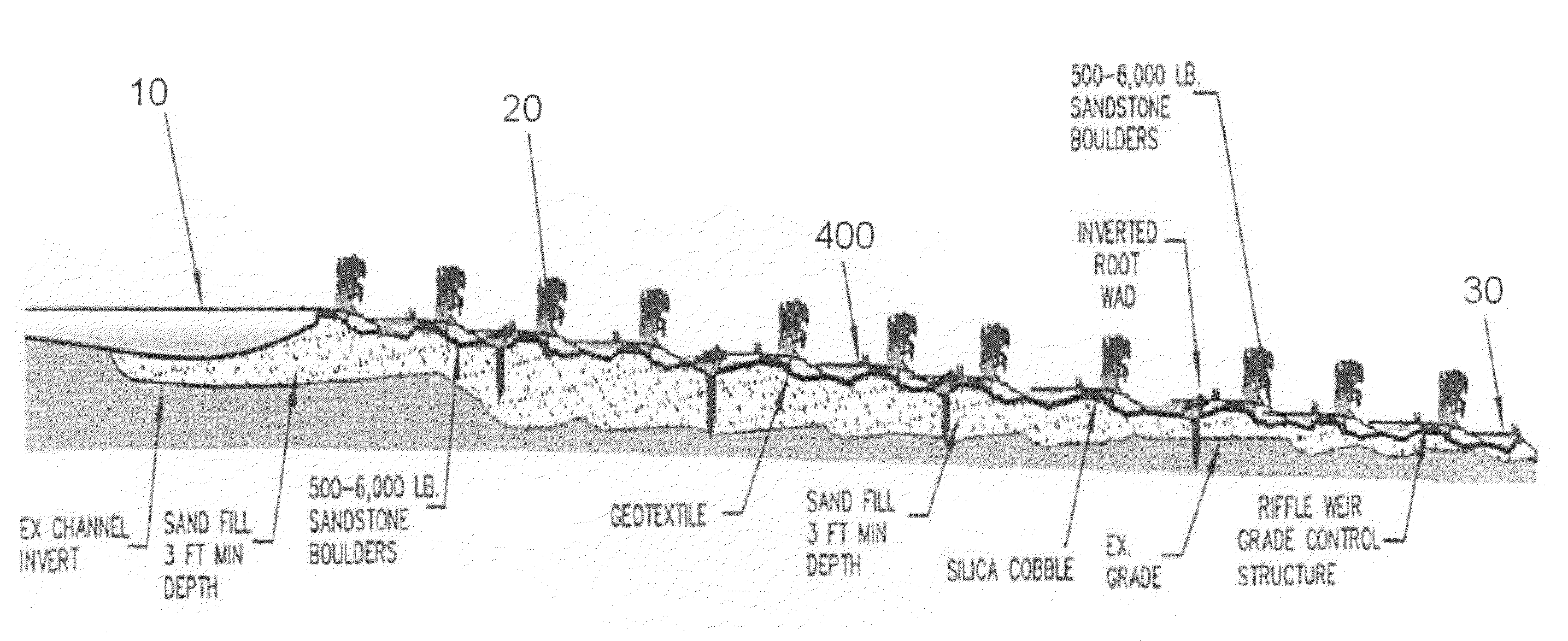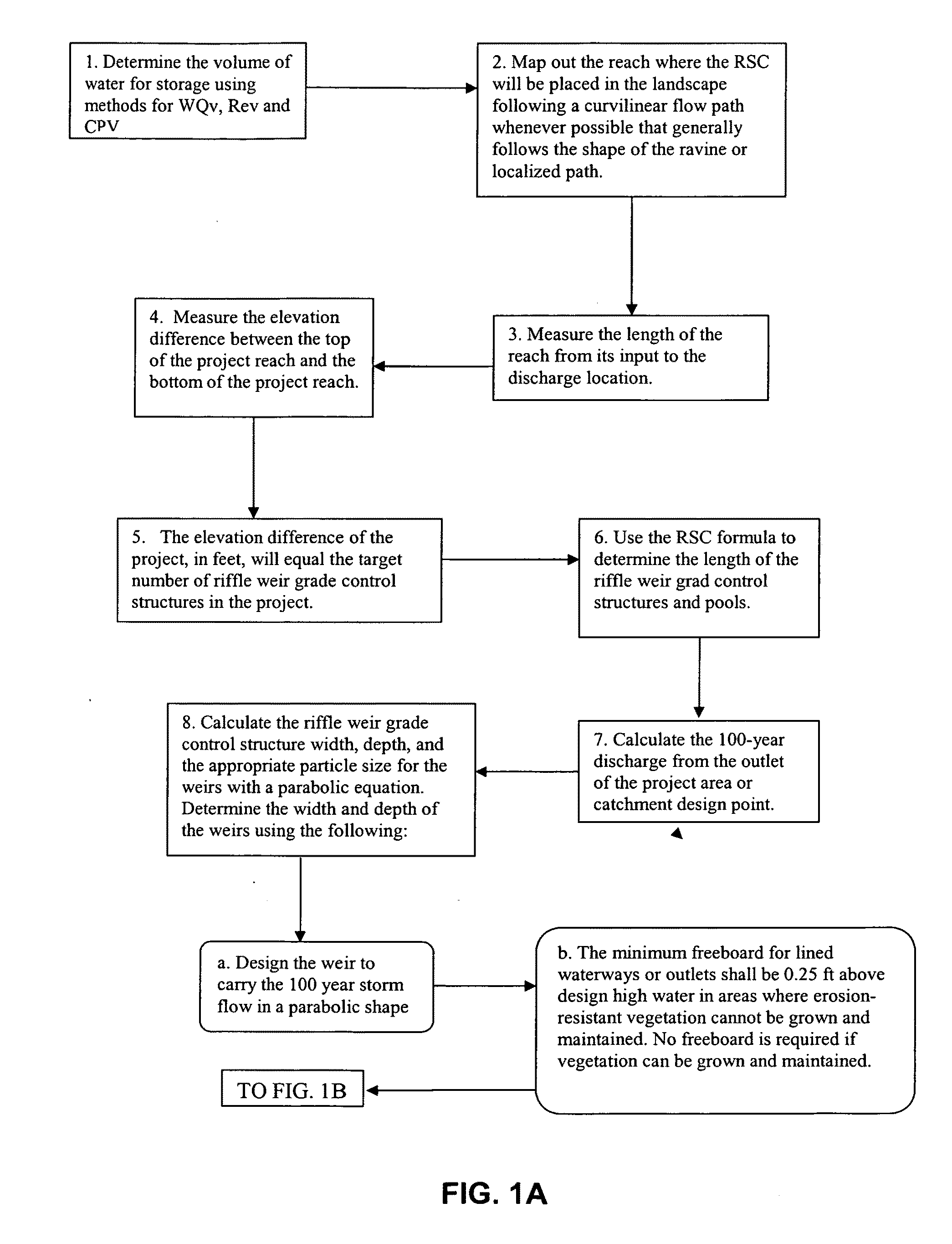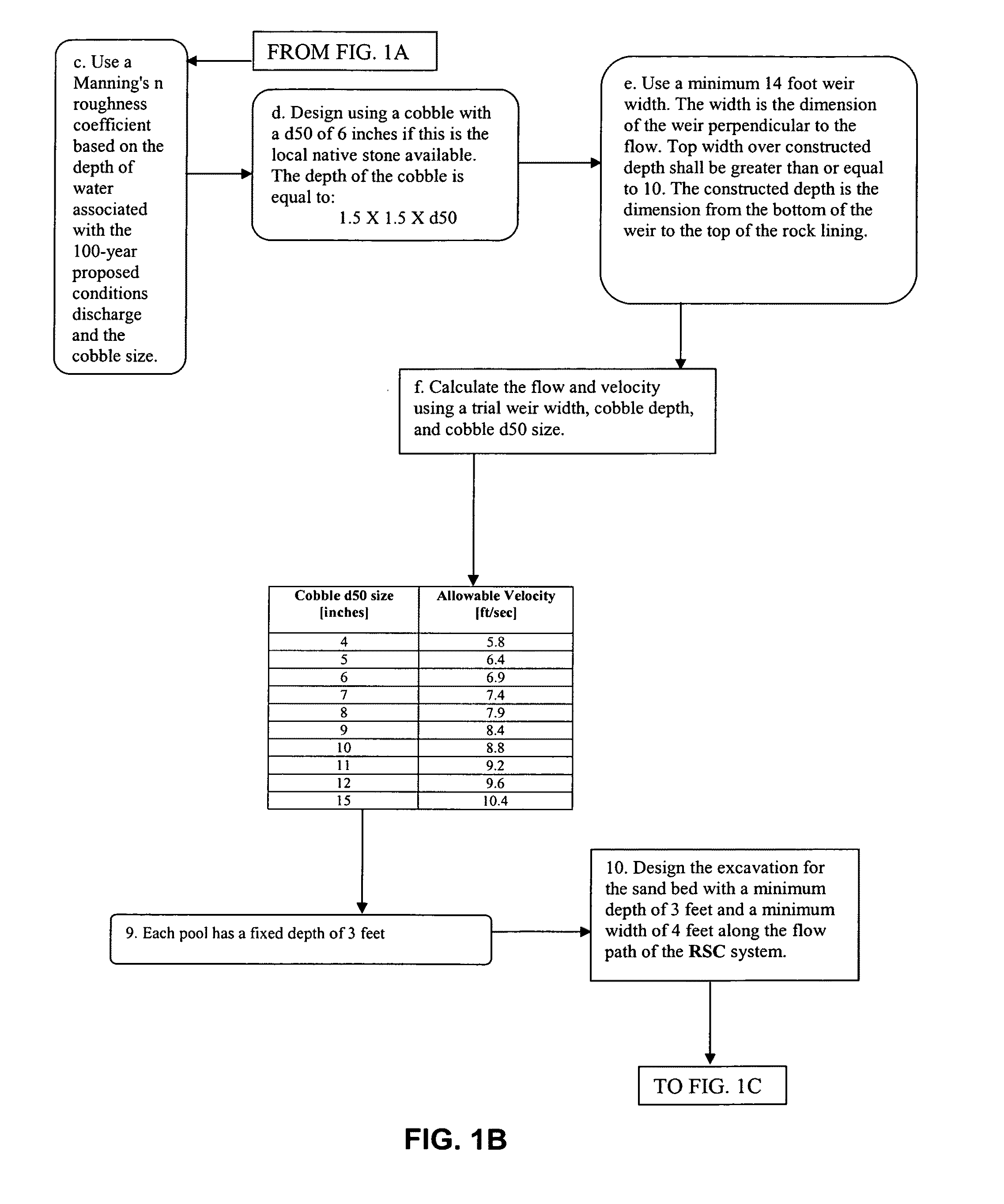Regenerative stormwater conveyance system and method
a stormwater conveyancing and stormwater technology, applied in runoff/storm water treatment, sewage draining, treatment involving filtration, etc., can solve the problems of lowering water tables, need for dredging, and ‘flashier’ streams with more erratic flows, etc., to achieve naturalization quickly, easy to obtain, and add structural stability
- Summary
- Abstract
- Description
- Claims
- Application Information
AI Technical Summary
Benefits of technology
Problems solved by technology
Method used
Image
Examples
Embodiment Construction
[0038]Exemplary embodiments of the present invention are discussed in detail below. While specific configurations are discussed, it should be understood that this is done for illustration purposes only. A person skilled in the relevant art will recognize that other components and configurations may be used without departing from the spirit and scope of the invention.
[0039]Before describing exemplary, non-limiting embodiments in accordance with the present invention, a number of terms are defined to assist the reader. The terms defined are components of a seepage wetland system in accordance with the present invention.
[0040]Primary seepage reservoir—water reservoir designed to irrigate porous media (sand or gravel), spread water out along the outer regions of a project site to detain the first flush of stormwater into a project site at the highest elevation possible on the given site.
[0041]Seepage Reservoirs—Sand berms are placed in appropriate positions in the landscape to capture s...
PUM
 Login to View More
Login to View More Abstract
Description
Claims
Application Information
 Login to View More
Login to View More - R&D
- Intellectual Property
- Life Sciences
- Materials
- Tech Scout
- Unparalleled Data Quality
- Higher Quality Content
- 60% Fewer Hallucinations
Browse by: Latest US Patents, China's latest patents, Technical Efficacy Thesaurus, Application Domain, Technology Topic, Popular Technical Reports.
© 2025 PatSnap. All rights reserved.Legal|Privacy policy|Modern Slavery Act Transparency Statement|Sitemap|About US| Contact US: help@patsnap.com



